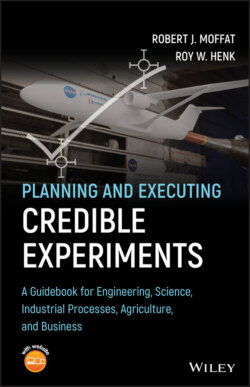Читать книгу Planning and Executing Credible Experiments - Robert J. Moffat - Страница 14
1 Choosing Credibility
ОглавлениеNo one believes a theory except its originator.
Everyone believes an experiment except the experimenter. 1
The decision to design a credible experiment sets you on a path to research with impact. Along this path you will make many decisions. This book prepares you to anticipate the choices you will face to plan and achieve an experiment that you the experimentalist also can believe.
There are two kinds of material to consider with respect to experimental methods: the mechanics of measurement and the strategy of experimentation. This book emphasizes the strategy and tactics of experiment planning.
The fact is that laboratories need people who can answer difficult questions experimentally. We offer this text to answer this need, to promote balanced competence in the field of experimental work. Abraham Lincoln is attributed with the saying “Give me six hours to chop down a tree and I will spend the first four sharpening the axe.”2 If there is anything like a “law of compound interest” in experimental work, then the effort spent to improve an experiment plan will return a bigger payoff than the same effort applied to fine‐tuning transducers.
It is relatively easy to deal with sensors, calibrations, and corrections: those are concrete, factual bits of technology. The basic mechanisms are well known and tested. Could this be why there are so many technical references to transducers and so few to experiment planning?
Strategy is not concrete, however; it contains large elements of opinion, experience, and personal preference. One cannot prove that a particular strategy is best! What seems to be a “clever insight” to one person may seem “dull and pedestrian” to another.
The ideas presented in this text were developed over 60 years of teaching and consulting on experimental methods. They provide an outline of a systematic way of designing experiments of provable accuracy. Not the only way, certainly, but at least one way. Each reader who has much experimental experience will have techniques to add to the list – we ask and welcome your feedback.
Novices might be inclined to take this text too literally, as though experiment planning were a quantitative discipline with rules that always worked. That would be a mistake. One must be flexible in the laboratory – following a sound basic philosophy – but taking advantage of the specific opportunities each experiment offers.
